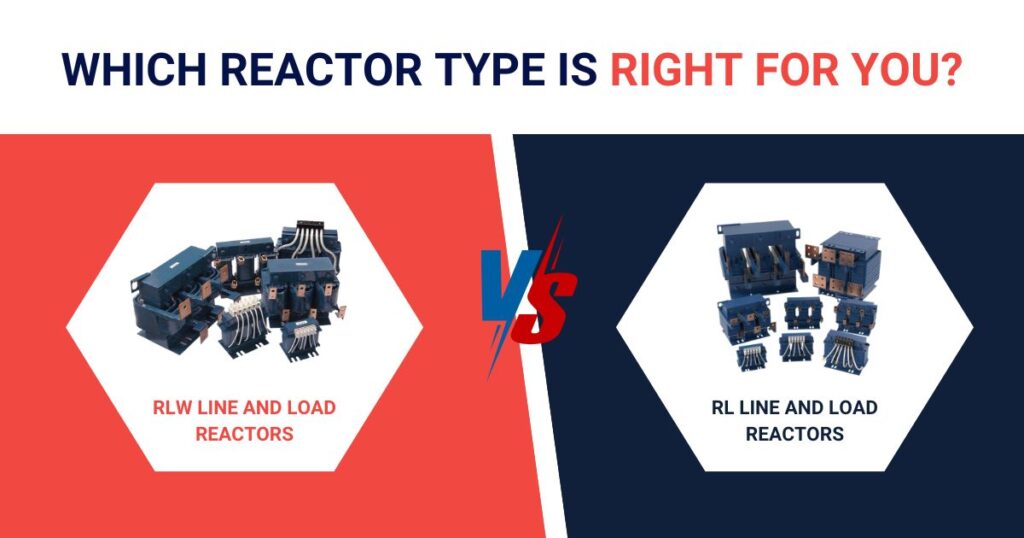Consulting
RL vs RLW – Which Reactor Type is Right For You?
Choosing the right reactor for your equipment can enhance performance, reduce harmonic distortion, and prolong device life. With both RL and RLW Line/Load Reactors offering unique advantages, understanding their differences in terms of durability, overload capacity, and impedance levels is key. Explore the best solution for your needs with this guide to RL and RLW reactors.
RLW Line and Load Reactors
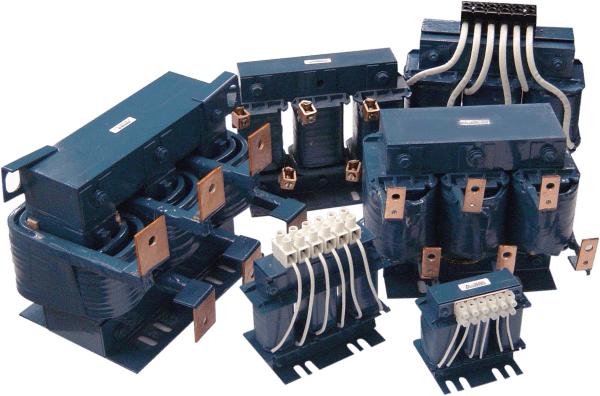
- Proven performance in the field
- Reliable and economical
- Compact and lightweight
- Ideal for OEMs, integrators and panel builders
Our RLW Line/Load Reactors are a state-of–the-art solution for absorbing everyday power line disturbances that can damage or shut down variable frequency drives (VFDs) and other sensitive equipment. They work on both the line side and load side to give you an economical way to reduce nuisance tripping, reduce harmonic distortion and minimize long lead effects. Their epoxy impregnated design also reduces audible noise, and improves structural and moisture integrity.
Put an end to power spike issues and minimize downtime with our RLW Line/Load Reactors from MTE.
Our RLW Reactors are the state-of-the art filtering solution for virtually any 4 or 6-pulse rectifier or power conversion unit. There are units available for amperage ratings from 0.5A to 750A. Our 3% impedance option is 90% effective and our 5% option extends spike protection to 99%.
Smaller size and weight makes these units ideal for OEMs, integrators and panel builders.
Wider range of impedance values for accurate and cost-effective selection.
DIN Rail mounting options for easy panel installation.
UL/cUL listed and CE marked for all your installation requirements.
| Preliminary Performance Specifications | |
| Impedance Levels | 1.5%, 3% and 5% |
| Continuous Service Factor | 100% |
| Overload Rating – Line Side | 150% of RMS rating for 1 minute 200% of RMS rating for 10 seconds |
| Input Voltage Range | 208V – 690V |
| Current Range | 0.5A – 750A |
| Temperature Rise | 140°C |
| Ambient Temperature | -40 to 50°C |
| Altitude Maximum Without Derating | 1,000 meters |
| Fundamental Frequency | 50/60 Hz |
| Inductance Curve | 100% at 100% Current 80% at 150% Current 50% at 200% Current |
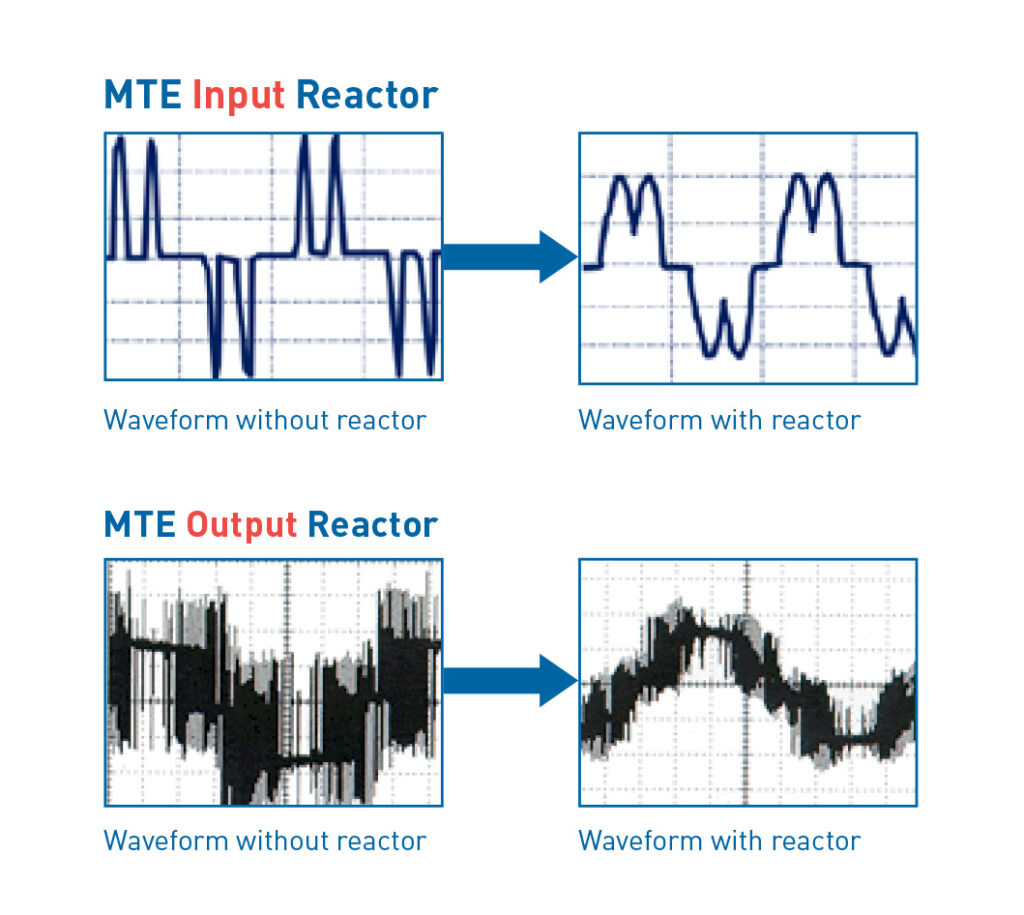
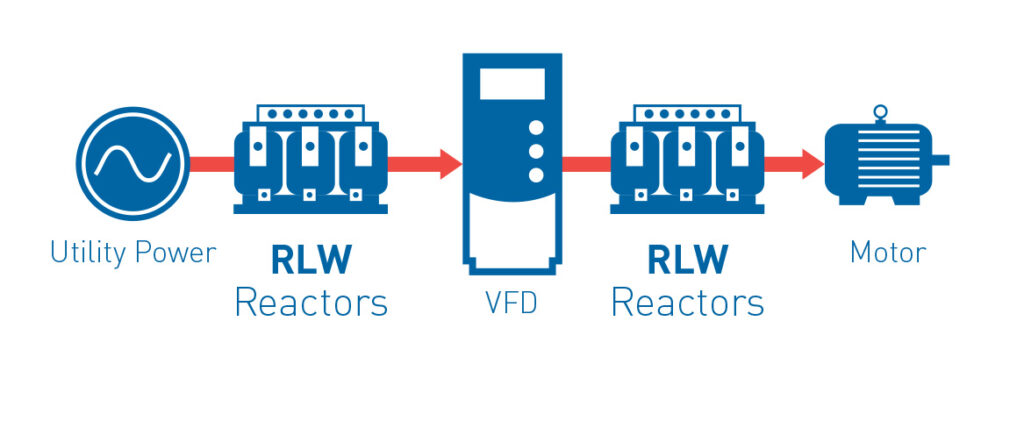
RL Line and Load Reactors
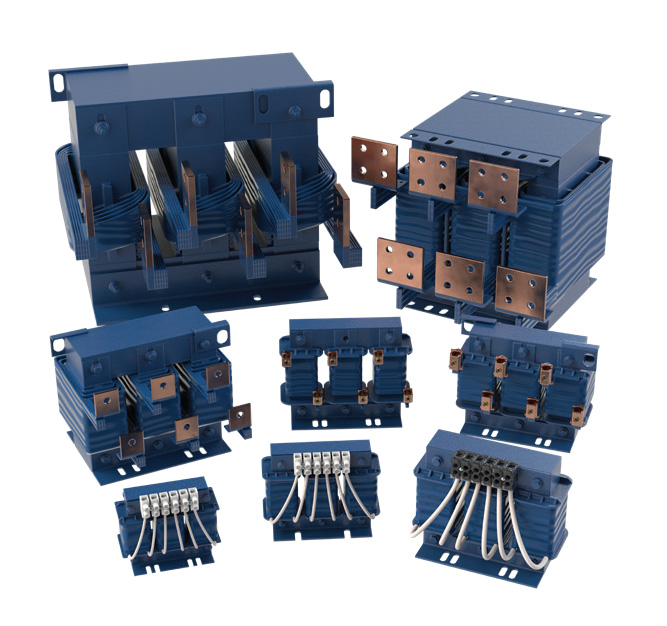
- Best-in-class line/load reactors
- Most robust, highest continuous service factor
- Low watts loss
- Performance and durability that is unmatched by the competition
Our RL Line/Load Reactors are best-in class power quality units with a long history of proven performance for lowering harmonics caused by variable frequency drives (VFDs). Rugged and robust, they are unequalled in absorbing power line disturbances that can damage or shut down variable frequency drives (VFDs) and other sensitive equipment. They work on both the line (input) side and load (output) side to give you an easy solution that reduces nuisance tripping, reduces harmonic distortion and minimizes long lead effects.
Improved power quality, enhanced productivity and complete peace of mind are easy with RL Line/ Load Reactors.
Our RL Line/Load Reactors are a robust, best-in-class filtering solution for virtually any 4 or 6-pulse rectifier or power conversion unit. There is no need to derate these reactors. They are harmonic compensated and protected to assure optimum performance in the presence of harmonics. There are units available for a full line of currents (1A to 1,500A) and a full line of impedance options (1.5%, 3% and 5%).
Robust design and construction for unequaled filtering of power line disturbances.
Highest continuous service factor virtually eliminates breakdowns in the field.
Reduces audible noise.
Multiple cabinet designs help meet NEMA 1/2 and 3R.
| Performance Specifications | |
| Impedance Levels | 1.5%, 3% and 5% |
| Continuous Service Factor | Reactors rated 1 to 750 Amps – 150% of rating Reactors rated above 750 Amps – 125% of rating |
| Overload Rating | 200% of rated for 30 minutes 300% of rated for 1 minute |
| Input Voltage Range | 208V – 690V |
| Current Range | 1A – 1,500A |
| Temperature Rise | 135°C |
| Ambient Temperature | -40 to 50°C |
| Altitude Maximum Without Derating | 1,000 meters |
| Fundamental Frequency | 50/60 Hz |
| Inductance Curve | 100% at 100% Current 100% at 150% Current 50% at 350% Current |


RL vs RLW – Which Reactor Type is Right For You?
We often get asked by customers if we would recommend using an RL-Reactor or an RLW-Reactor. There are a number of factors that need to be considered when making this decision. The information on this page is designed to help you make that decision.
General Differences
In general, the RL Reactors are more robust and perform better with regard to watts loss and overload capability. Both can be used on Line Side and Load Side, however the RLW needs to be derated when used on the load side. Also, RL Reactors are available in open style, NEMA 1/2 and NEMA 3R cabinets. RLW reactors are not available in NEMA 3R as a standard offering, but can be purchased in open style and in NEMA 1/2 cabinets.
Technical Specification Differences
| RL Reactors | RLW Reactors | |
|---|---|---|
| Continuous Service Factor | Reactors rated 1 to 750 amps: 150% of rating; Reactors rated above 750 amps: 125% of rating | 100% |
| Overload Rating | 200% of rated for 30 minutes; 300% of rated for 1 minute | 150% of RMS rating for 1 minute; 200% of RMS rating for 10 seconds |
| Current Range (additional ratings may be available) | 1A – 1,500A | 0.5A – 750A |
| Temperature Rise | 135 Degrees Celsius | 140 Degrees Celsius |
| Inductance Curve | 100% at 100% Current; 100% at 150% Current; 50% at 350% Current; 100% at 100% Current | 80% at 150% Current; 50% at 200% Current |
| Impedance Levels | 1.5%, 3% & 5% | |
| Input Voltage Range | 208V – 690V | |
| Ambient Temperature | -40 to 50 Degrees Celsius | |
| Altitude Maximum Without Derating | 1,000 meters | |
| Fundamental Frequency | 50/60 Hz | |
By understanding the key distinctions between RL and RLW reactors, you can make an informed decision for your specific application. For tailored guidance on selecting the ideal reactor, reach out to our application engineers: servodynamics.com.vn/contact.

 Tiếng Việt
Tiếng Việt
